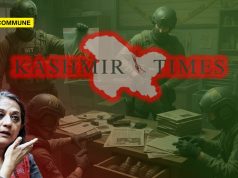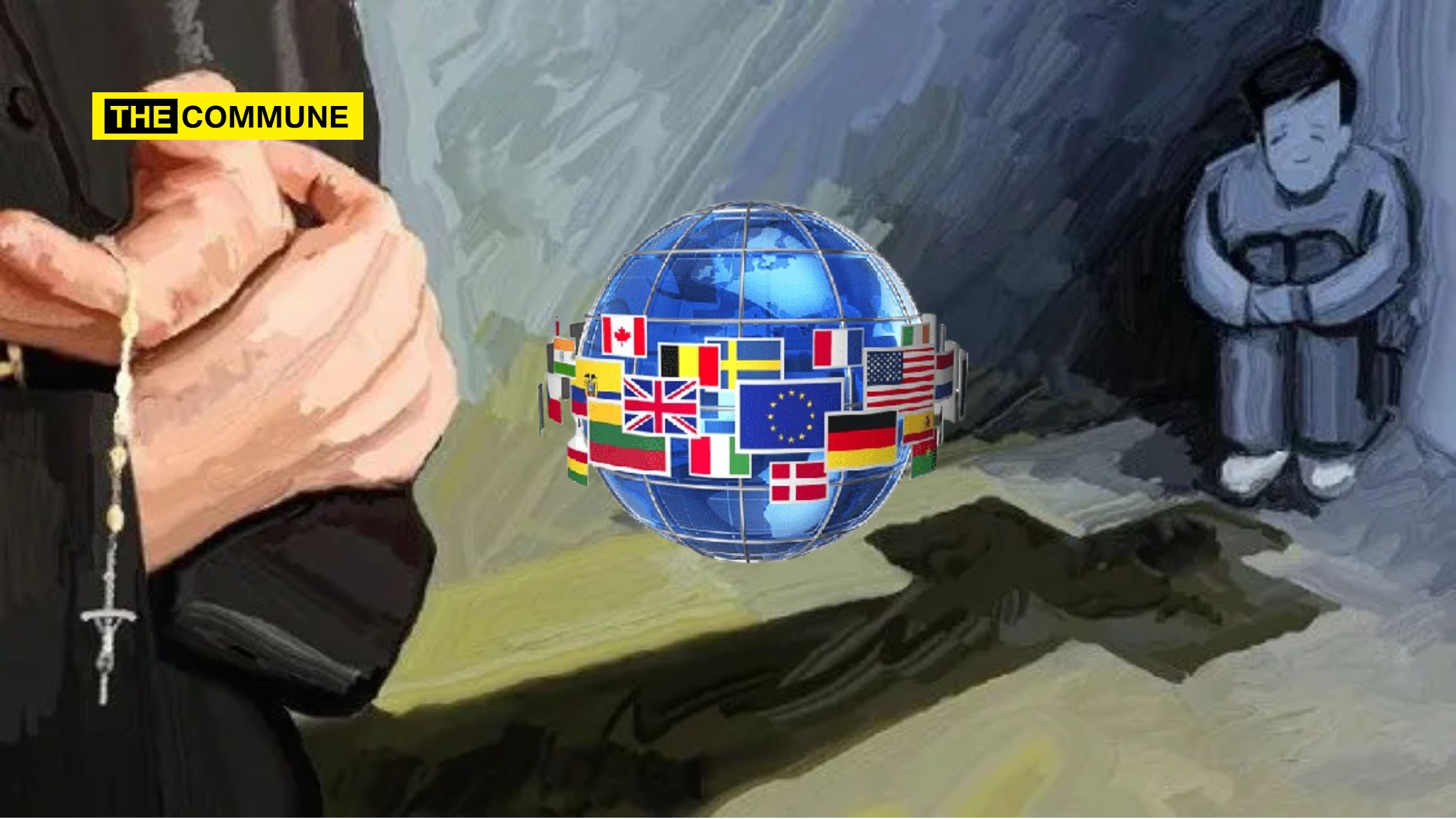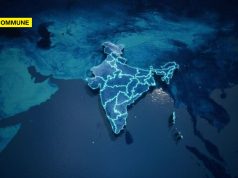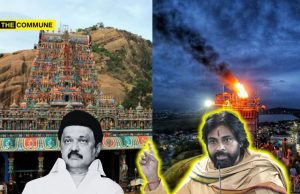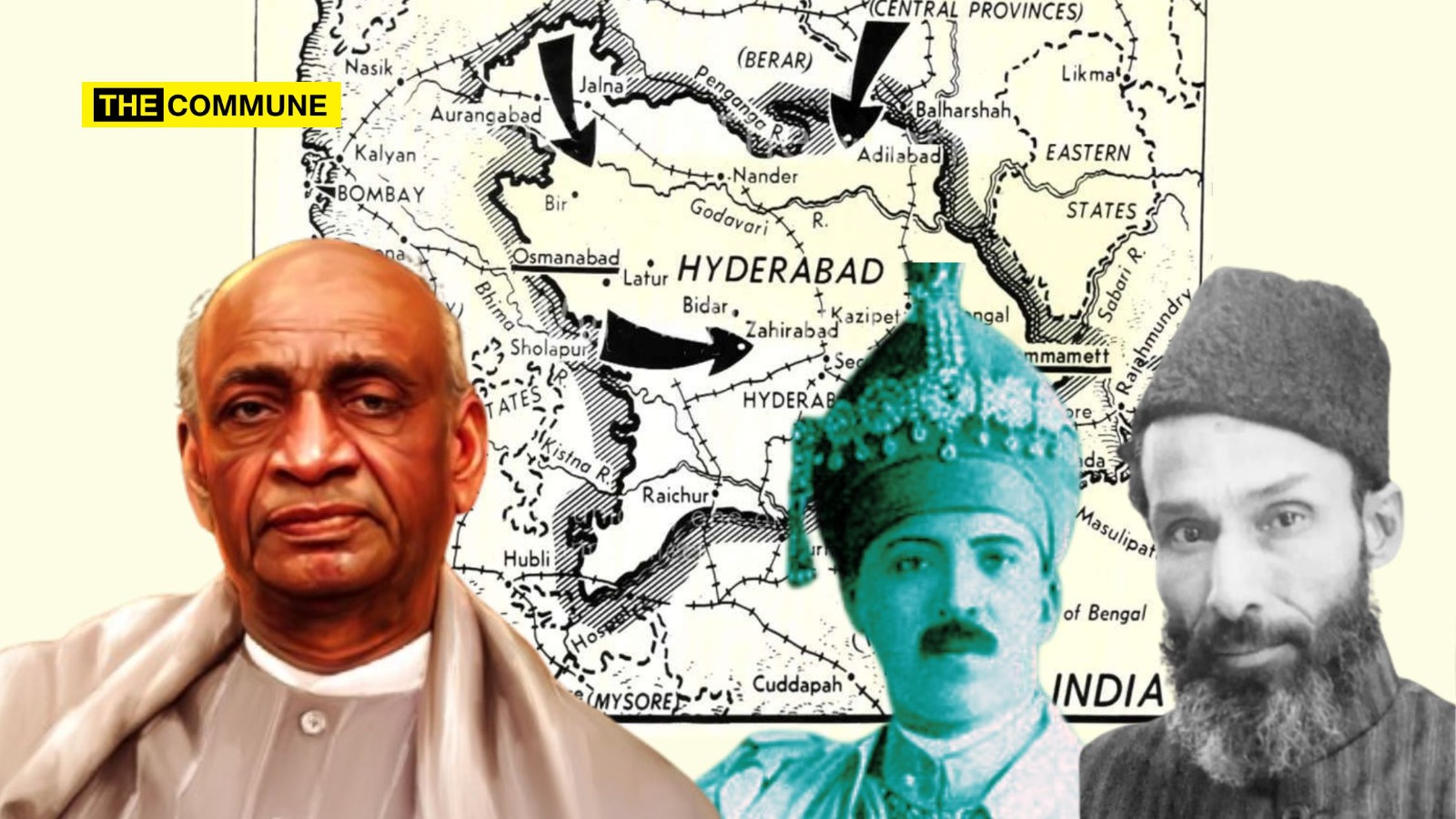
The liberation of Hyderabad in 1948 marks a significant chapter in India’s post-independence history. This event, often overshadowed by the broader narrative of India’s independence and partition, played a crucial role in shaping the modern Indian nation-state. The struggle to integrate Hyderabad into the Indian Union in 1948 involved complex political manoeuvring, social upheaval, and, ultimately, military action.
The State of Hyderabad was renamed by the fifth Qutb Shahi Sultan of Golconda, Mohammad Quli (r. 1580-1612). It is located on the banks of the Musi River. On 21 September 1687, the Golconda Sultanate came under the rule of the Mughal emperor Aurangzeb, and Mir Qamruudin Chin Qilich Khan, the son of Aurangzeb’s General Ghaziuddin Khan Feroz Jang, became the ruler of the state, claiming ancestry to the first Khalifa, Abu Bakr.
The Princely State Of Hyderabad
Hyderabad was the last remnant of the Mughal empire, occupying a pivotal geopolitical position surrounded by central provinces in the north, Bombay in the west, and Madras in the east and south. It was a premier state with a population of approximately 16 million, an annual revenue of Rs 26 crore, and an area of 82,000 square miles, even having its currency.
Despite Hyderabad’s premier status, the British administration did not treat it differently from other states, a point of frustration for the Nizam. Although 85% of the state’s population were Hindus, they were denied civil, police, and army positions, which were reserved for Muslims. Even in the 132-member Legislative Assembly set up by the Nizam, Muslims held the majority.
The Nizam’s Resistance
After the announcement of the British Government’s 3rd June Plan for the formation of two states, Bharat and Pakistan, the Nizam of Hyderabad, Osman Ali Khan, Asaf Jah VII, issued a firman declaring Hyderabad’s intent to become an independent sovereign state, refusing to send representatives to either constituent assembly. He dispatched a delegation, led by the Nawab of Chhatari, to meet Lord Mountbatten, requesting the retrocession of Berar to Hyderabad and Dominion status.
Mountbatten rejected both requests, stating that Berar was integrated with the central provinces and that any change in the status quo would require the people’s consent. Similarly, Dominion status was denied as the British government would only recognize either of the two new dominions. With these rejections, the delegation returned to Hyderabad empty-handed.
Lord Mountbatten, hopeful for Hyderabad’s accession to Bharat, suggested that the Nizam be given more time to educate the 15% Muslim minority, who held most top positions. On 8th August, the Nizam again wrote to Mountbatten, reiterating his desire not to accede to Bharat but rather to negotiate a treaty with conditions for autonomy, particularly the privilege of not aligning with Bharat in the event of war with Pakistan.
After multiple rounds of negotiations, in November 1947, Hyderabad signed a standstill agreement with Bharat, continuing previous arrangements but excluding the stationing of Bharatiya troops in the state. However, with the rise of the militant *Razakars*, who supported the Nizam’s desire to establish an independent Islamic state, the lives of the Hindu majority worsened. To curb the Razakar menace, Bharat took punitive action in September 1948, leading to Nizam’s surrender and Hyderabad remaining with Bharat.
Role Of Majlis-I-Ittehad-ul-Muslimeen (MIM) & Razakars In Nizam’s Administration
During the rule of Mir Osman Ali Khan, the last Nizam of Hyderabad, a fanatical organization known as Majlis-I-Ittehad-ul-Muslimeen (MIM) gained significant influence over state affairs. Though the Nizam held nominal power, it was the leadership of the MIM that dominated key decisions. Formed in 1926 by Mahamad Nawaz Khan, the MIM aimed to unite Muslims, both local and outsiders, under one banner to create an independent Muslim state—Azad Hyderabad. Over time, the MIM became a vehicle for non-local Muslims to exert influence, creating tension between local Muslims (Mulki) and non-locals (non-Mulki), who often controlled key administrative posts.
By 1927, Bahaduryar Jung took leadership of the MIM, and under his guidance, the organization became a force that sought to transform Hyderabad into a Muslim state. This movement alienated moderate Muslims, Arya Samaj, and nationalist groups like the Hindu Mahasabha. The MIM’s increasingly radical stance shocked these groups, leading to heightened communal tensions in Hyderabad. Bahaduryar Jung’s sudden death in 1944 briefly placed Abdul Hasan, a moderate, in charge of the MIM. However, Hasan’s moderate stance and sympathy for organizations like Arya Samaj were seen as a threat by the Nizam. Consequently, in 1946, Kasim Razvi was appointed the MIM leader.
The Rise Of Razakars And Their Influence
Kasim Razvi, a lawyer from Maharashtra, transformed the MIM into a more aggressive force by organizing the Razakars, a paramilitary group of fervent Muslims loyal to the idea of Azad Hyderabad. Established in 1947, the Razakars pledged to fight for the MIM’s vision of an independent Hyderabad under Muslim rule, and Razvi proclaimed that Muslims were the rightful rulers of the state. His influence over state affairs grew, so he controlled appointments in the state cabinet and police force. Razvi and his followers forced the retirement of Shia officials, giving Sunni Muslims dominance in the administration. Razvi’s key ally, Syed Taqiuddin, was placed in charge of the intelligence network, and the police minister, Moin Nawaz Jung, was forced to hand over arms to the Razakars.
Razvi’s Razakars were highly organized and well-armed. By 1948, there were 30,000 Razakars in Hyderabad, which grew to 100,000 by July and August. These forces were stationed at various strategic points across the Hyderabad State, including in the districts of Bidar, Gulbarga, Raichur, and Karnataka, each boasting thousands of trained volunteers. The Razakars had access to a large arsenal, including rifles, Sten guns, and machine guns, and were supported by a transport network of trucks and jeeps. The MIM also used the Hyderabad state radio and press to propagate their message, with newspapers and weeklies publishing Razvi’s speeches.
Razakars’ Atrocities And Reign Of Terror
The Razakars’ reign of terror, especially between 1947 and 1948, was characterized by violence and atrocities, particularly against the Hindu population in Hyderabad. They organized public processions to intimidate Hindus, tortured members of nationalist groups such as Arya Samaj, Hindu Mahasabha, and the State Congress and attacked towns and villages. The Razakars also engaged in looting, arson, and the collection of revenues from villagers. They committed heinous crimes such as raping and murdering men and women, burning down shops, and forcibly converting Hindus to Islam.
One of the most brutal incidents occurred in the village of Gorta, where Razakars killed hundreds of villagers, including pregnant women and children, in a massacre that left the town devastated. Similar atrocities were reported across other villages in the Hyderabad-Karnataka region, where Razakars were murdered, looted, and raped with impunity. In Gulbarga district alone, 42 people were killed in Aland on one occasion. In Raichur, villages such as Koppal, Kolur, and Belagatti were repeatedly attacked, with homes set ablaze and wealth looted. Women were not spared, with many choosing to commit suicide rather than face rape and molestation by the Razakars.
Opposition Political Parties & Resistance
Despite the Razakars’ brutality, opposition to the Nizam’s regime grew, spearheaded by various political organizations. The Arya Samaj, active since 1892, was a key voice against the Nizam’s communal policies. In 1938, the Nizam attempted to suppress Arya Samaj by issuing decrees that restricted its religious practices, leading to a Satyagraha that intensified the divide between Hindus and Muslims in the state. The Hyderabad State Congress, founded in the same year, sought responsible governance under the Nizam but was also dedicated to opposing his oppressive regime. It supported merging Hyderabad with India, and its activities increased in 1947 after India’s independence.
Nizam’s Struggle For Independence & Suppression Of Dissent
In an attempt to maintain his control, the Nizam declared Hyderabad an independent state in 1947, refusing to accede to either India or Pakistan. He played on communal fears, claiming that Hindus would be upset if Hyderabad joined Pakistan, and Muslims would not accept its merger with India. However, the majority Hindu population of Hyderabad desired integration with India. The Nizam, in turn, intensified his repressive measures, using the police and Razakars to crush any dissent. Satyagrahis were lathi-charged, imprisoned, and subjected to inhumane treatment in jail. Many political prisoners faced brutal violence, while students boycotted schools to join the freedom movement.
Role Of RSS And Local Resistance
The Rashtriya Swayamsevak Sangh (RSS) also played a significant role in opposing the Nizam’s regime. In 1946, RSS members in Warangal town defied the Nizam by singing patriotic songs and hoisting the Indian tricolour flag. As Razakar violence spread, local youth in districts such as Bidar, Raichur, and Gulbarga took up arms to protect their villages. They organized guerrilla-style resistance against the Razakars, killing many of them and driving back Nizam’s forces. These acts of resistance became folk tales, with women singing songs about the bravery of local heroes who stood up to the Razakars.
The atrocities committed by the Razakars during the final years of the Nizam’s rule left a deep scar on the population of Hyderabad. By the time of India’s independence in 1947, the Hyderabad state had become a theatre of violence and communal strife, with Razakars and opposition groups locked in a bitter struggle. Ultimately, the Nizam’s ambitions of maintaining an independent Hyderabad were crushed when the Indian government launched “Operation Polo” in September 1948, bringing Hyderabad into the Indian Union and ending the reign of terror imposed by Razvi and the Razakars.
Subscribe to our Telegram, WhatsApp, and Instagram channels and get the best stories of the day delivered instantly.

